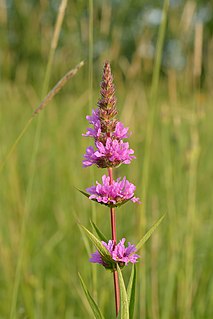
Lythrum salicaria or purple loosestrife is a flowering plant belonging to the family Lythraceae. It should not be confused with other plants sharing the name loosestrife that are members of the family Primulaceae. Other names include spiked loosestrife and purple Lythrum. This herbaceous perennial is native to Europe and Asia, and possibly Australia.

Lythrum is a genus of 38 species of flowering plants native to the temperate world. Commonly known as loosestrife, they are among 32 genera of the family Lythraceae.

Spartium junceum, known as Spanish broom, rush broom, or weaver's broom, it is a species of flowering plant in the family Fabaceae and the sole species in the genus Spartium. It is closely related to the other brooms.

Thinopyrum junceum, commonly named sand couch-grass, is a species of grass in the family Poaceae. It is found in Europe and temperate Asia, and grows from rhizomes. They have a self-supporting growth form and simple, broad leaves. Individuals can grow to 52 cm tall.
Atriplex lanfrancoi is a species of plant in the family Amaranthaceae. It is endemic to Malta and is listed as endangered by IUCN.
Linaria pseudolaxiflora, the Maltese toadflax, is a species of plants in the family Plantaginaceae. They are listed as vulnerable by IUCN.

Asparagus horridus is a species of shrub in the family Asparagaceae. They are climbing plants. They have simple, broad leaves and fleshy fruit. Individuals can grow to 1 m (3.3 ft) tall.
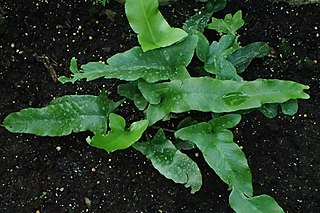
Asplenium sagittatum is a species of fern in the family Asplenium (spleenworts). Individuals can grow to 3.2 cm (1.3 in) tall.
Atractylis cancellata is a species of annual herb in the family Asteraceae. They have a self-supporting growth form and simple, broad leaves and dry fruit. Individuals can grow to 2 cm (0.79 in) tall.
Astragalus sesameus is a species of plant in the family Fabaceae.

Callitriche truncata, the short leaved water starwort, is a species of plant in the family Plantaginaceae. They have a self-supporting growth form and simple, broad leaves. Individuals can grow to 10 cm tall.
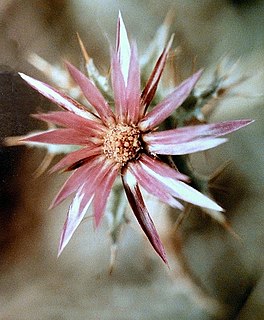
Carlina lanata is a species of plant in the family Asteraceae.
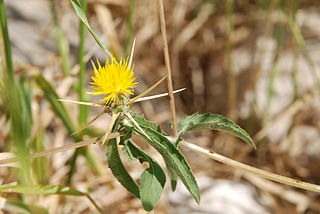
Centaurea hyalolepis is a species of plants in the family Asteraceae.
Crepis pusilla is a species of plants in the family Asteraceae.
Damasonium bourgaei is a species of plant in the family Alismataceae.
Erodium laciniatum is a species of flowering plant in the family Geraniaceae.
Opuntia dejecta is a species of plant in the cactus family. They are listed in cites appendix ii. Flowers are visited by the broad-billed hummingbird.
Hypericum australe is a species of plant in the family Hypericaceae. Individuals can grow to 24 cm tall.

Krubera peregrina is a species of plants in the family Apiaceae. It is the only species in the genus Krubera.
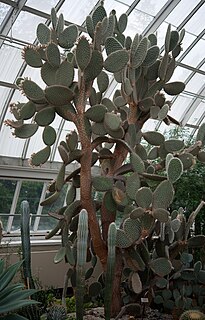
Opuntia pilifera is a species of plants in the family Cactaceae (cacti). They are listed in CITES Appendix II.












